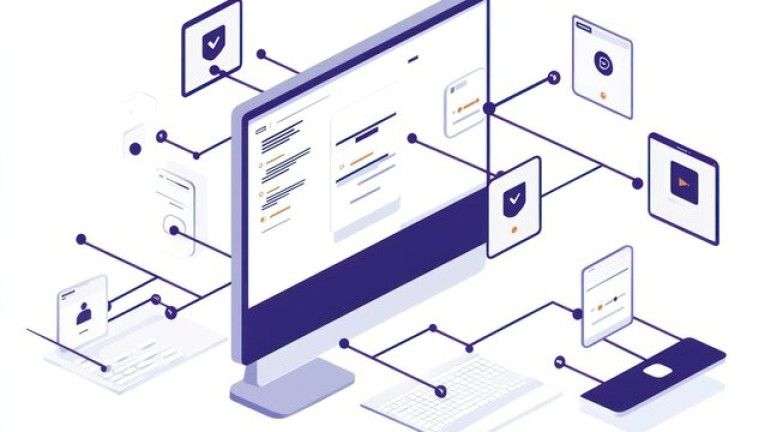Introduction
Blockchain technology has changed how we think about security, transparency, and decentralization. AIO Blockchain Lab is one of the newer players in this field, promising to refine and redefine what blockchain can do. I want to explore this platform in depth, breaking down its core components, use cases, advantages, and limitations. This article will also include comparisons with other blockchain solutions, along with real-world applications and calculations.
Table of Contents
What is AIO Blockchain Lab?
AIO Blockchain Lab is a research and development initiative focused on blockchain infrastructure, smart contracts, and decentralized applications (DApps). Unlike generic blockchain frameworks, AIO Blockchain Lab aims to integrate artificial intelligence with blockchain to optimize transactions, security, and scalability.
Core Features of AIO Blockchain Lab
| Feature | Description |
|---|---|
| AI Integration | Uses AI to predict transaction bottlenecks and optimize throughput. |
| Smart Contracts | Automates processes through self-executing contracts. |
| Scalability | Uses layer-2 scaling solutions to handle more transactions per second. |
| Security | Implements advanced encryption and consensus mechanisms. |
| Decentralization | Ensures no single entity has control over the network. |
How AIO Blockchain Lab Compares to Other Blockchains
To understand where AIO Blockchain Lab stands, let’s compare it with Bitcoin and Ethereum in terms of speed, scalability, and energy efficiency.
Performance Comparison
| Attribute | AIO Blockchain Lab | Bitcoin | Ethereum |
|---|---|---|---|
| Transactions Per Second (TPS) | 10,000+ | 7 | 30 |
| Consensus Mechanism | AI-optimized PoS | PoW | PoS |
| Smart Contracts | Yes | No | Yes |
| Energy Consumption | Low | High | Medium |
From this comparison, we see that AIO Blockchain Lab offers a more scalable and energy-efficient solution. While Bitcoin remains the most secure and decentralized, its low transaction speed makes it impractical for large-scale applications. Ethereum is improving with Ethereum 2.0, but it still faces congestion issues. AIO Blockchain Lab tries to address these limitations with AI-driven optimizations.
Real-World Applications
1. Financial Services
AIO Blockchain Lab can revolutionize banking by reducing settlement times. Instead of traditional bank transfers taking days, AIO’s blockchain enables transactions in seconds.
Example Calculation: If a bank processes 100,000 transactions daily at a fee of $0.50 per transaction, that equates to $50,000 in fees. AIO Blockchain Lab can reduce these costs to $0.05 per transaction, saving $45,000 per day.
2. Supply Chain Management
The supply chain industry faces inefficiencies in tracking shipments and verifying authenticity. AIO Blockchain Lab enables real-time product tracking, reducing fraud and improving transparency.
| Challenge | Traditional Supply Chain | AIO Blockchain Lab Solution |
|---|---|---|
| Tracking | Manual entries, prone to errors | Automated blockchain entries, tamper-proof |
| Verification | Paper-based documents | Digital verification |
| Fraud Prevention | Difficult to detect fake products | Immutable ledger prevents counterfeits |
3. Healthcare Records Management
Hospitals struggle with data breaches and inefficient record-keeping. AIO Blockchain Lab secures patient records using blockchain encryption, making them accessible only to authorized parties.
Technical Insights
AIO Blockchain Lab operates on a proof-of-stake (PoS) model but enhances it with AI-driven optimizations. The AI monitors network activity and adjusts staking rewards based on transaction demand, reducing congestion during peak hours.
AI-Optimized Proof-of-Stake (PoS)
| Traditional PoS | AI-Optimized PoS |
|---|---|
| Staking is static | Staking is dynamic based on network load |
| Transactions can clog during high demand | AI predicts congestion and reallocates resources |
| Rewards are fixed | Rewards adjust based on network efficiency |
This approach ensures that the blockchain remains fast and cost-effective.
Challenges and Limitations
While AIO Blockchain Lab presents many advantages, it also has some challenges:
- Adoption Hurdles: Businesses and governments are slow to adopt new technologies.
- Regulatory Uncertainty: Some regions have unclear blockchain regulations.
- AI Vulnerabilities: AI models can have biases or vulnerabilities if not properly trained.
Future Outlook
The future of AIO Blockchain Lab depends on continuous innovation. If it successfully integrates AI with blockchain at scale, it could surpass existing solutions. However, widespread adoption will require regulatory clarity and user trust.
Key Predictions
| Aspect | Prediction |
|---|---|
| Adoption | Expected to increase as AI integration improves scalability. |
| Regulation | Likely to face initial hurdles but gain acceptance over time. |
| Innovation | AI-driven optimizations will continue reducing transaction costs. |
Conclusion
AIO Blockchain Lab presents a promising future for blockchain technology. By integrating AI with blockchain, it enhances speed, security, and efficiency. While challenges exist, its potential applications in finance, supply chain, and healthcare make it a noteworthy development. If it gains traction, AIO Blockchain Lab could become a major player in the blockchain space.





